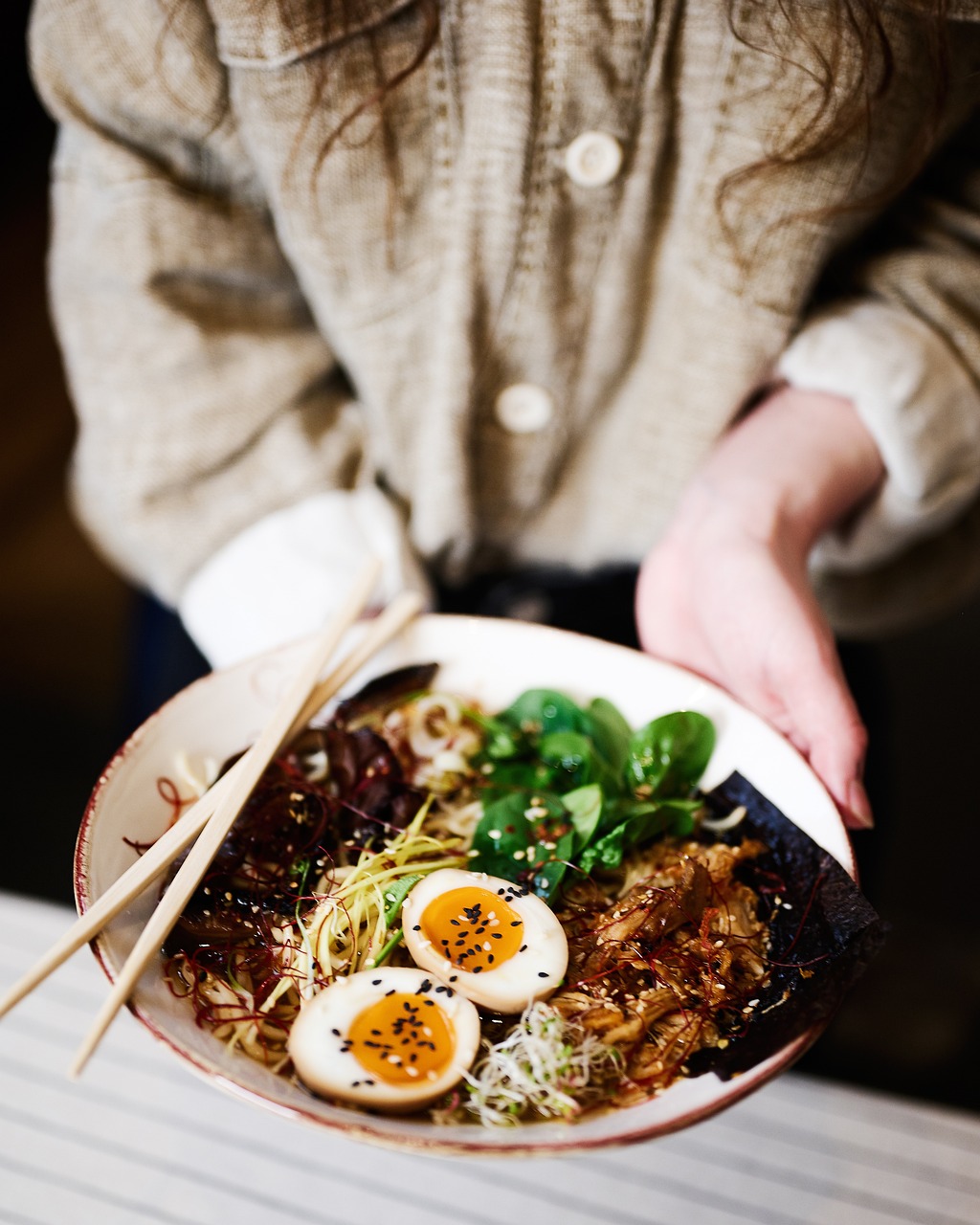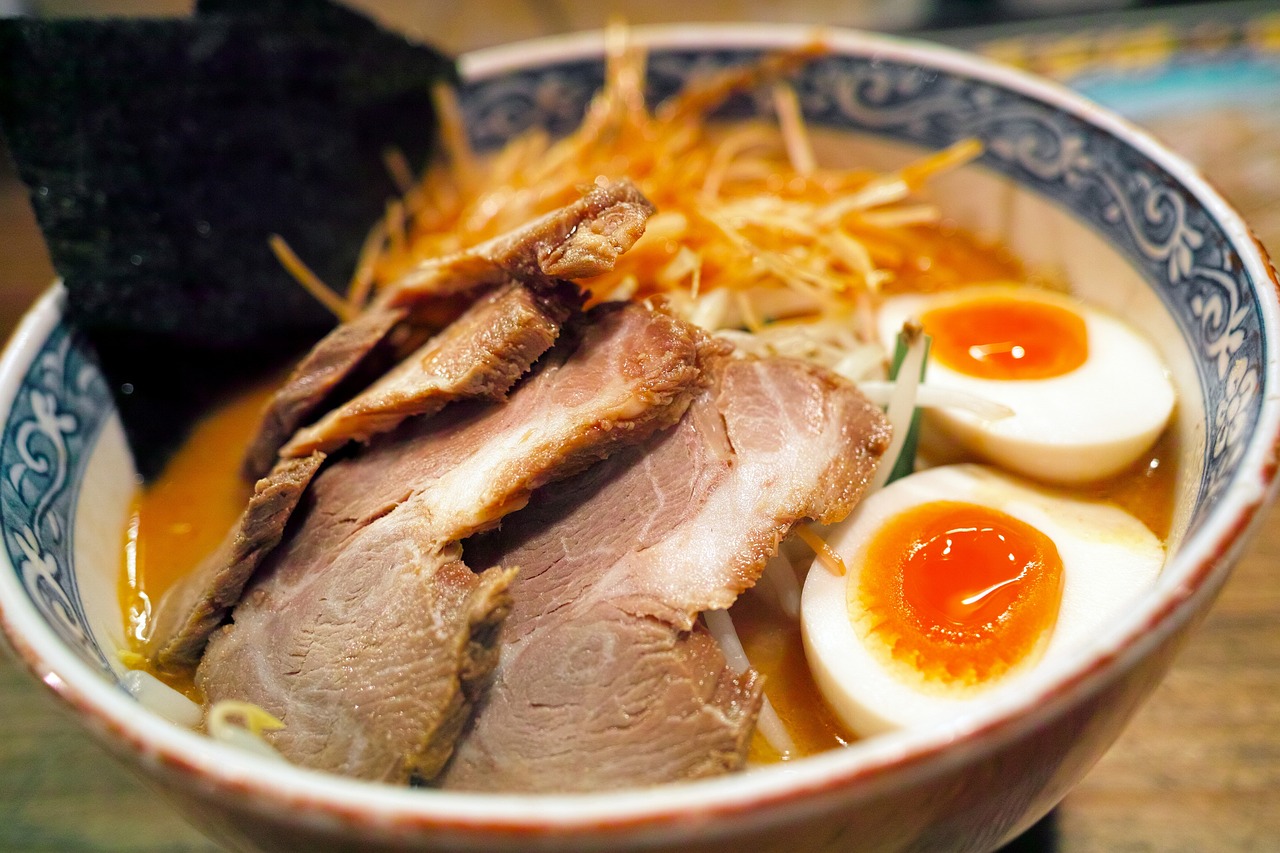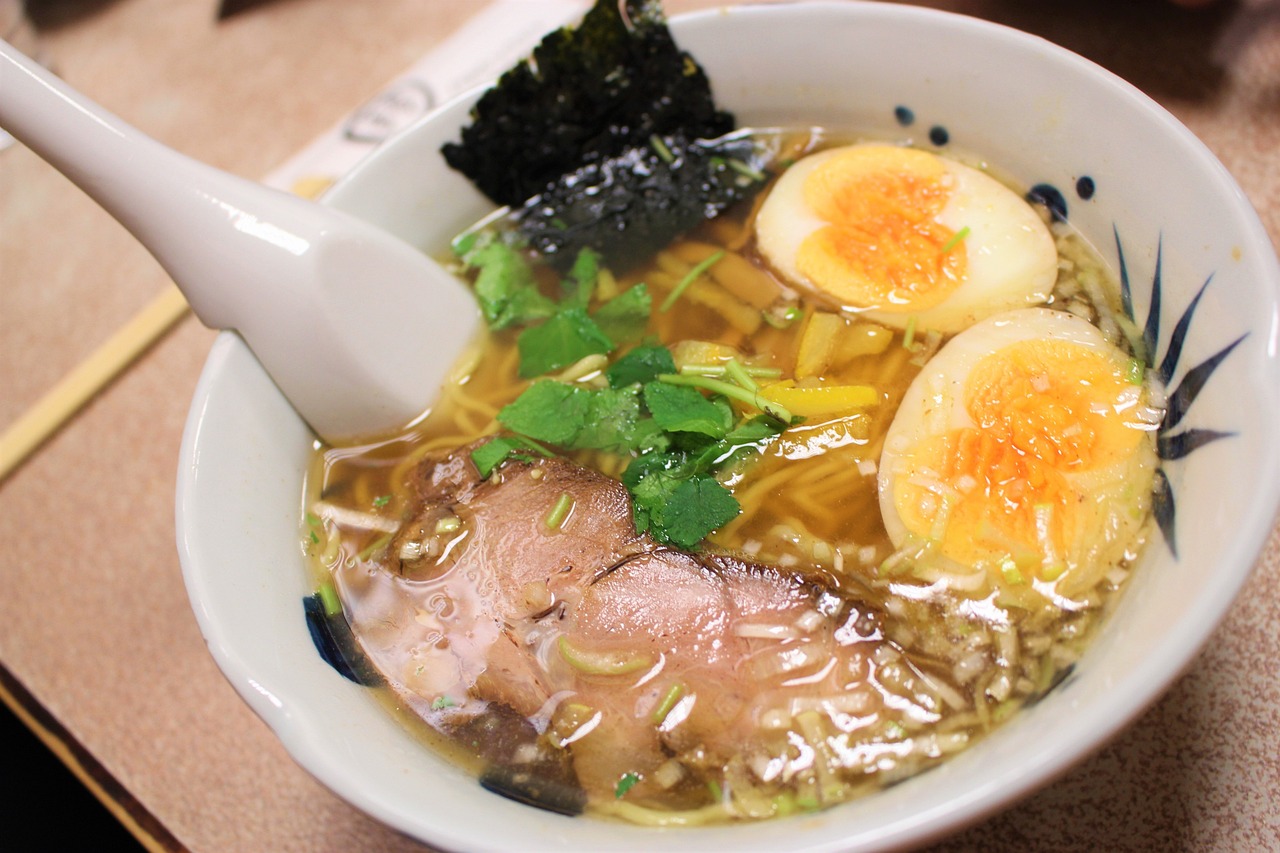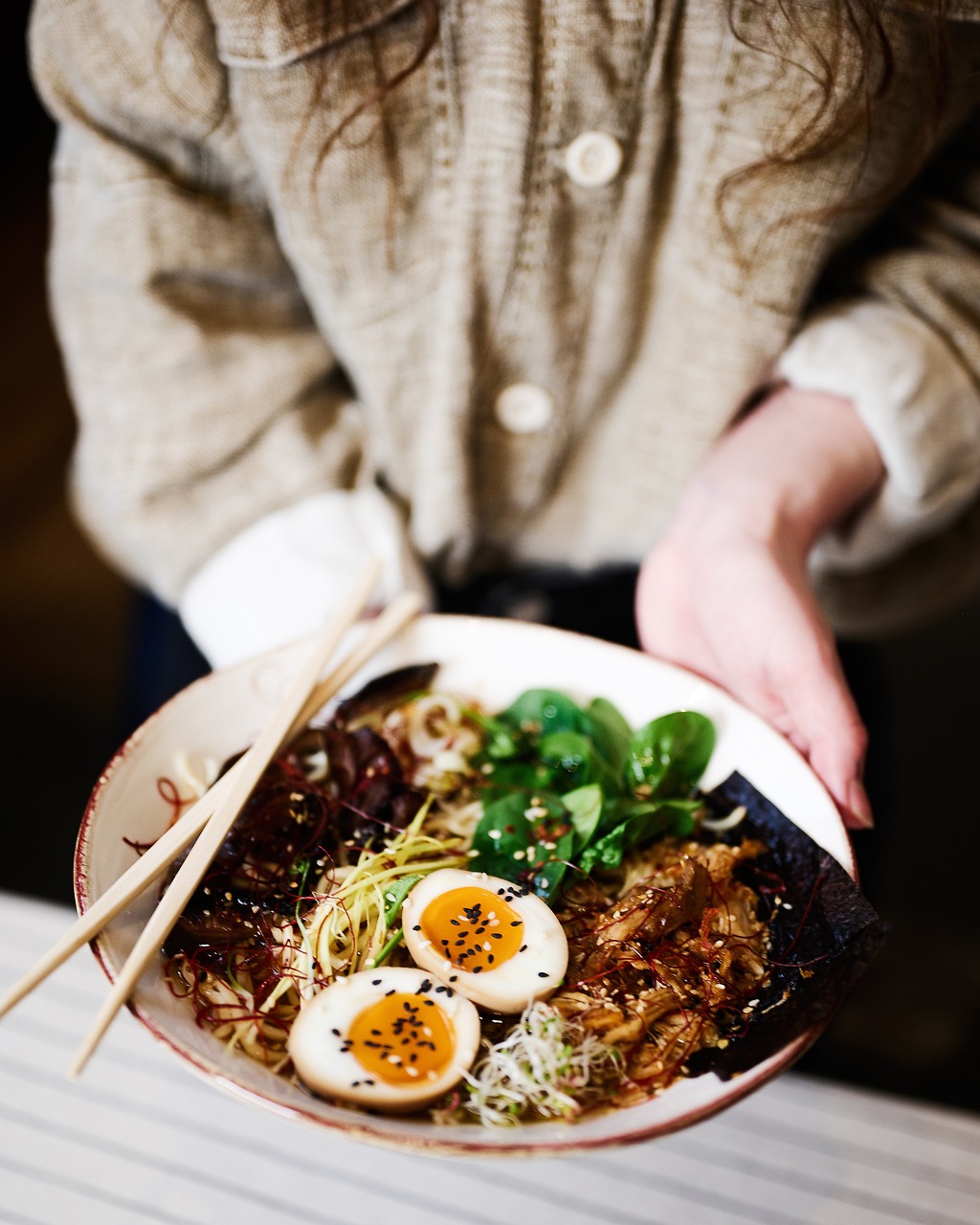Indulge in a culinary journey through Japanese comfort food with an array of tantalizing dishes such as Ramen, Donburi, and more. From the savory goodness of rich broth and chewy noodles in Ramen to the mouthwatering mix of tender meat, rice, and flavorful sauce in Donburi, these comfort foods are bound to transport your taste buds to a world of flavorful delights. At Tastepan.com, you can explore a treasure trove of expertly curated recipes, complete with step-by-step instructions and ingredient lists, allowing you to recreate these delectable dishes in the comfort of your own kitchen. Elevate your culinary adventures and satisfy your cravings with the irresistible allure of Japanese comfort food.
Ramen
Ramen is a beloved Japanese comfort food that has gained popularity worldwide. This delicious and comforting dish consists of flavorful broth, chewy noodles, and an array of toppings. The history of ramen dates back to the late 19th century when it was introduced in Japan by Chinese immigrants. Over the years, ramen has evolved and become a staple in Japanese cuisine, with various regional variations and unique styles.

History of Ramen
The history of ramen can be traced back to China, where it originated from a dish called “lamian,” which means pulled noodles. In the late 19th century, Chinese immigrants brought this noodle dish to Japan and adapted it to suit local tastes. Ramen quickly gained popularity, especially among laborers and students due to its affordability and filling nature. It was initially sold in small food stalls and became a popular street food in Japan.
Varieties of Ramen
Ramen comes in various regional variations, each with its own distinct flavors and characteristics. Some of the most popular types of ramen include:
-
Shoyu Ramen: This soy sauce-based ramen features a clear broth with a savory umami flavor. It is often topped with slices of roasted pork, green onions, and bamboo shoots.
-
Miso Ramen: Miso, a fermented soybean paste, is the key ingredient in this type of ramen. It results in a rich and hearty broth that pairs well with toppings such as corn, bean sprouts, and butter.
-
Tonkotsu Ramen: Originating from Fukuoka, this style of ramen features a creamy and flavorful broth made from simmering pork bones for hours. It is typically served with slices of tender pork, marinated soft-boiled eggs, and pickled vegetables.
-
Shio Ramen: Shio, meaning salt in Japanese, refers to the main seasoning in this ramen. The broth is clear and light, allowing the natural flavors of the ingredients to shine through. It is commonly garnished with seafood, seaweed, and kamaboko (fish cake).
These are just a few examples of the countless variations of ramen found throughout Japan. Each region has its own unique take on this beloved dish, making it a culinary adventure for ramen enthusiasts.

Ingredients in Ramen
While the exact ingredients may vary depending on the type of ramen, there are some key components that are found in most varieties. The main elements of a bowl of ramen include:
-
Noodles: Traditional ramen noodles are made from wheat flour, water, and kansui (alkaline mineral water), which gives them their characteristic springy texture. The thickness and shape of the noodles can vary based on personal preference and regional traditions.
-
Broth: The broth is the heart and soul of ramen. It can be made from a variety of ingredients, such as pork bones, chicken, fish, or vegetables. The broth is simmered for hours to extract maximum flavor and depth. Different seasonings like soy sauce, miso, or salt are added to create a unique taste profile.
-
Toppings: Ramen is often adorned with an array of toppings that enhance the overall flavor and texture. Common toppings include sliced roasted pork (chashu), soft-boiled eggs, nori (seaweed), menma (fermented bamboo shoots), green onions, and narutomaki (fish cake).
-
Seasonings: Various seasonings are used to add depth and complexity to the ramen. Soy sauce, miso, salt, and other condiments like sesame oil or chili oil are commonly used to tweak the flavor according to personal preferences.
It is important to note that the combination of these ingredients varies across different types of ramen, resulting in a diverse range of flavors and experiences.
How to Make Ramen at Home
Making ramen at home allows you to customize the flavors and toppings according to your own preferences. While the process may seem intimidating, with a little practice and the right ingredients, you can create a delicious bowl of homemade ramen. Here is a basic recipe to get you started:
Ingredients:
- 4 cups of chicken or vegetable broth
- 2 cloves of garlic, minced
- 1-inch piece of ginger, grated
- 2 tablespoons soy sauce
- 1 tablespoon mirin (sweet rice wine)
- 2 packs of ramen noodles
- Toppings of your choice (e.g., sliced roasted pork, soft-boiled eggs, green onions, nori)
Instructions:
- In a large pot, heat a tablespoon of oil over medium heat. Add minced garlic and grated ginger and sauté until fragrant.
- Pour in the chicken or vegetable broth and bring it to a boil. Reduce the heat and let it simmer for about 10 minutes to allow the flavors to meld.
- Stir in soy sauce and mirin. Adjust the seasoning according to your taste preferences.
- In a separate pot, cook the ramen noodles according to the package instructions. Drain and rinse with cold water to remove excess starch.
- Divide the noodles into serving bowls and pour the hot broth over them.
- Garnish with your choice of toppings, such as sliced roasted pork, soft-boiled eggs, green onions, and nori.
- Serve immediately and enjoy your homemade ramen!
Feel free to experiment with different broths, seasonings, and toppings to create your own signature ramen recipe.

Popular Ramen Toppings
Ramen toppings enhance the overall flavor and texture of the dish, taking it to another level of deliciousness. While the choice of toppings can vary based on personal preferences and regional traditions, there are some classic toppings that are widely loved. Here are a few popular ramen toppings:
-
Chashu (Roasted Pork): Thin slices of tender, slow-cooked roasted pork are a common topping in ramen. The melt-in-your-mouth texture and savory flavor of chashu complement the noodles and broth beautifully.
-
Soft-Boiled Eggs: Soft-boiled eggs with a slightly runny yolk are a staple in ramen. The creamy yolk adds richness and depth to the dish. Marinating the eggs in soy sauce or a mixture of soy sauce and mirin can further enhance their flavor.
-
Menma (Bamboo Shoots): Menma, or fermented bamboo shoots, provide a crunchy texture and a slightly sour taste that balances the richness of the broth. They are often seasoned with soy sauce and other seasonings to infuse them with more flavor.
-
Nori (Seaweed): Sheets of dried seaweed, known as nori, are often torn into smaller pieces and placed on top of ramen. They add a hint of oceanic umami flavor and a satisfying chewiness.
-
Corn: Sweetcorn kernels are a popular topping in ramen, especially for miso-based varieties. The natural sweetness of the corn adds a delightful contrast to the savory broth.
These are just a few examples of the many toppings you can choose for your ramen. Don’t be afraid to get creative and mix and match different flavors and textures to create a bowl of ramen that suits your taste buds.
Expanding Ramen Culture
Ramen has undoubtedly captured the hearts and palates of people around the world. As it gained popularity beyond its home country, ramen culture began to thrive in various parts of the globe. Ramen shops started popping up in major cities, offering authentic and innovative takes on this beloved dish.
In recent years, ramen festivals and events have become popular, bringing together ramen enthusiasts and showcasing a wide variety of ramen styles from different regions. These events provide an opportunity for both locals and tourists to immerse themselves in the rich and diverse ramen culture.
Ramen has also made appearances in popular culture, with numerous movies, anime, and TV shows featuring scenes or storylines revolving around ramen. This exposure has further contributed to the global fascination with this humble yet delightful comfort food.
With the growing popularity of ramen, it is exciting to see how this culinary phenomenon continues to evolve and adapt to new tastes and preferences. Whether you are craving a steaming bowl of traditional tonkotsu ramen or are eager to explore creative fusion ramen, there is no shortage of options to satisfy your ramen cravings.

